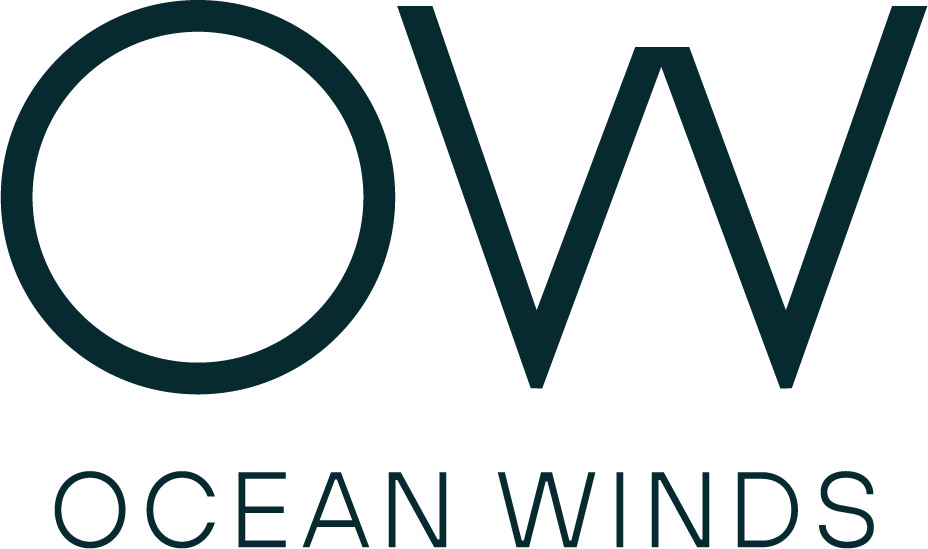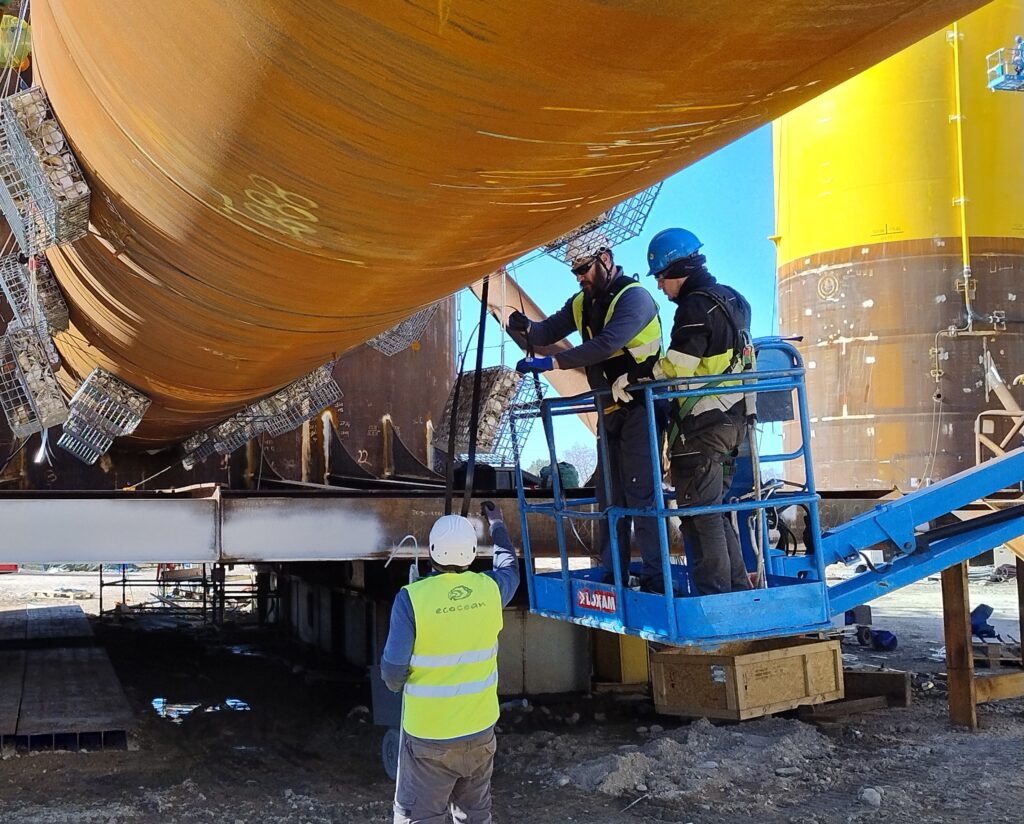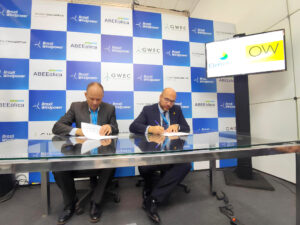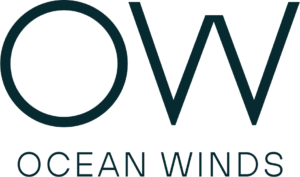• ECOCEAN’s Biohuts were successfully installed on a floater of our EFGL floating pilot project.
• This marks the first time artificial marine habitats are integrated into a floating offshore wind farm – placing EFGL at the forefront of renewable energy production, setting a new global benchmark.
April 16th, 2025 – Ocean Winds (OW), an international company dedicated to offshore wind energy, created as a 50-50 joint venture by EDP Renewables and ENGIE, in partnership with Banque des Territoires, a public investment institution committed to sustainable development, celebrates a first in environmentally-conscious offshore wind development. OW and Banque des Territoires have completed the installation of thirty-two Biohuts© – artificial nursery habitats for marine life, designed and manufactured by French ecological engineering firm ECOCEAN – on one of the three floaters of the EFGL (Éoliennes flottantes du golfe du Lion) pilot wind farm.
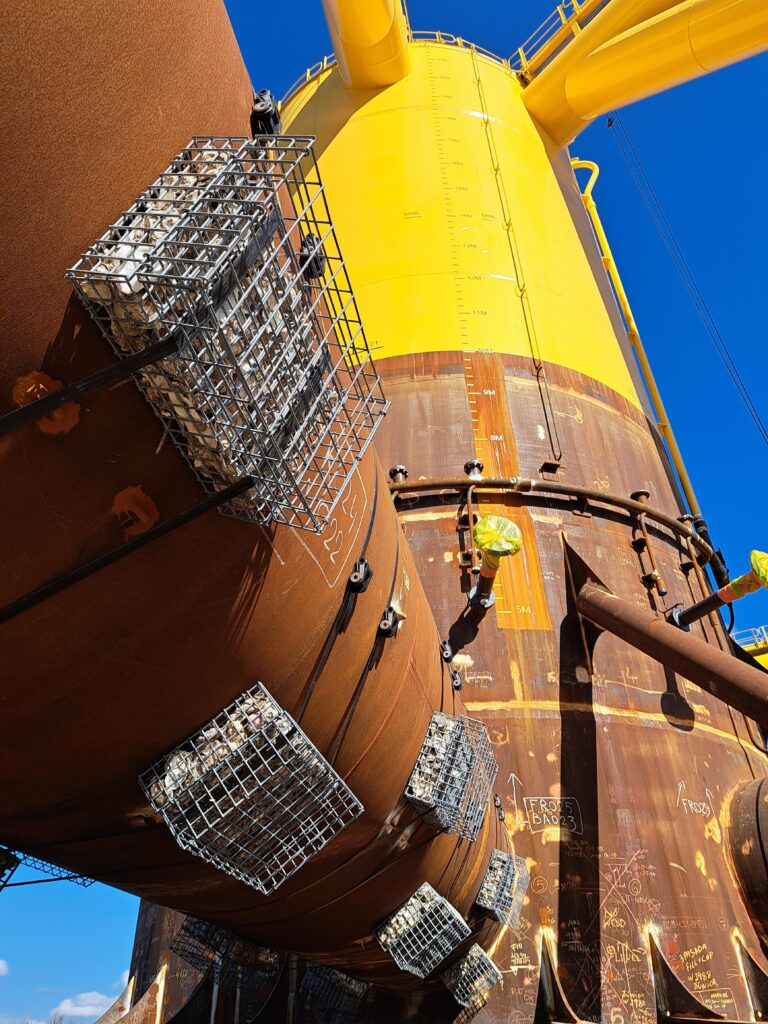
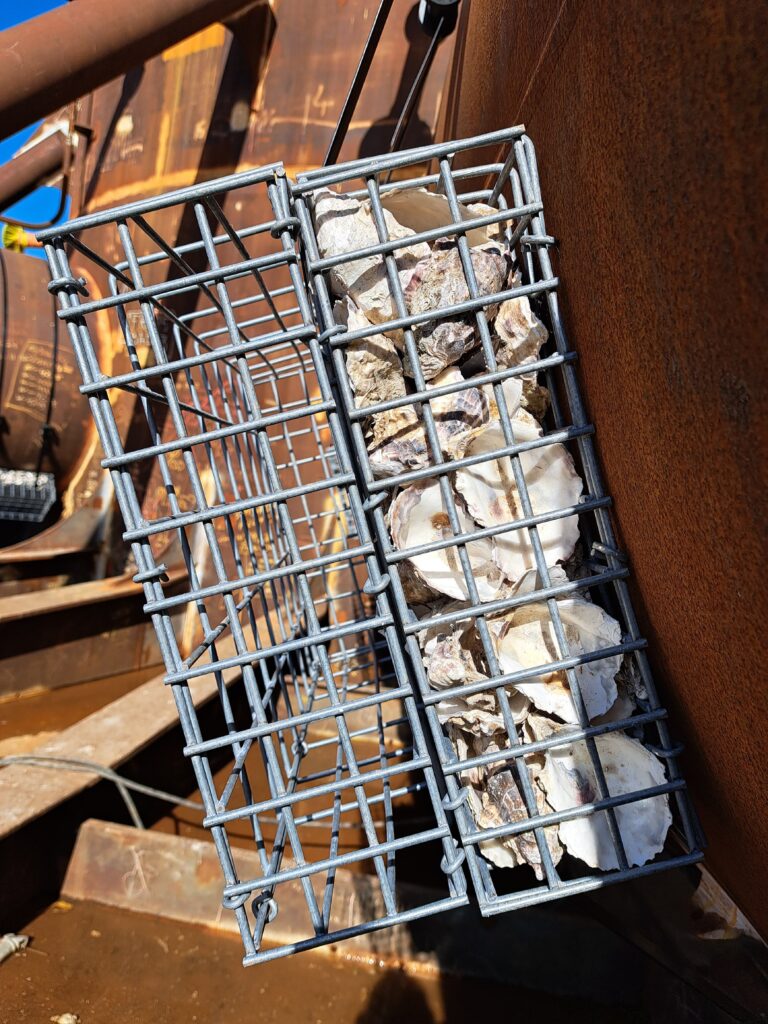
The installation of these Biohuts© on a floater is the result of an unprecedented approach in floating offshore wind power: never before has a floating wind farm been designed with the goal of creating a positive impact on marine biodiversity by diversifying habitats.
“The installation of several dozen Biohut® units on a floater of the EFGL project is the result of an iterative process initiated with ECOCEAN nearly 10 years ago, at the beginning of the EFGL project. Involving in particular the State services, the Marine Natural Park of the Gulf of Lion, and fishers, it included the prior deployment, from 2019 to 2023, of the BOB buoy equipped with Biohut® units at the EFGL project site. The encouraging results obtained during this study, notably by the Marine Ecosystems Research Center of the University of Perpignan, encouraged us to scale up, at the level of the pilot project,” declares Thomas Bordron, Development Director for the EFGL and EFLO projects at Ocean Winds.
To bring this ambition to life, the EFGL project relied on the innovative expertise of ECOCEAN, a Montpellier-based company leading in eco-designed solutions for ecological restoration in aquatic environments.
“The EFGL team was immediately receptive and showed great interest in what was, at first, a rather bold idea. Indeed, integrating our Biohut® units—originally designed for ports and marinas—into these megastructures installed offshore might have seemed incongruous. Yet, we were able to demonstrate their compatibility, and we are now eager to monitor the development of these Biohut® units over the coming years, in order to confirm their ecological value at the scale of a floating wind farm,” shares Gilles Lecaillon, President of ECOCEAN.
The Biohut© is an innovative solution that replicates natural nursery habitats using steel cages. The first cage contains a natural substrate made of oyster shells that fosters the development of the trophic chain, while a second, empty cage surrounds the first, creating a refuge space for small fish when predators approach. This setup supports the development of marine fauna and provides post-larval fish with a favourable environment—offering both diverse food sources and protection—enabling them to reach a size sufficient for survival in the natural environment.
The installation of these Biohuts is the result of a close almost decade-long collaboration between OW and ECOCEAN, and project partners. It is grounded in early research like the Biodiversity Observation Buoy (BoB) buoy deployment at the EFGL which confirmed the potential of a significant “reef effect”—showing that floating structures located offshore can attract a wide variety of coastal marine species.
The EFGL floater, combined with comparative monitoring will contribute to the scientific understanding between offshore and coastal ecosystems. This shapes more environmentally integrated practices for future offshore wind projects, both locally with the upcoming Eoliennes Flottantes d’Occitanie (EFLO) project, in which Ocean Winds and the Banque des Territoires are also shareholders, and for OW’s global portfolio of which one third is floating.
The EFGL project thus reinforces our commitment to marine ecosystems while addressing major energy transition challenges. The collaboration with ECOCEAN exemplifies our commitment to the establishment of a French floating wind industry and contributes to the state’s goal of 45 GW of offshore wind by 2050 while respecting marine ecosystems.
Beginning in May 2025, the three EFGL floaters will be towed for the final wind turbine assembly. The installation of the turbines, 16 kilometres off the French Mediterranean coast, is scheduled for summer 2025.
